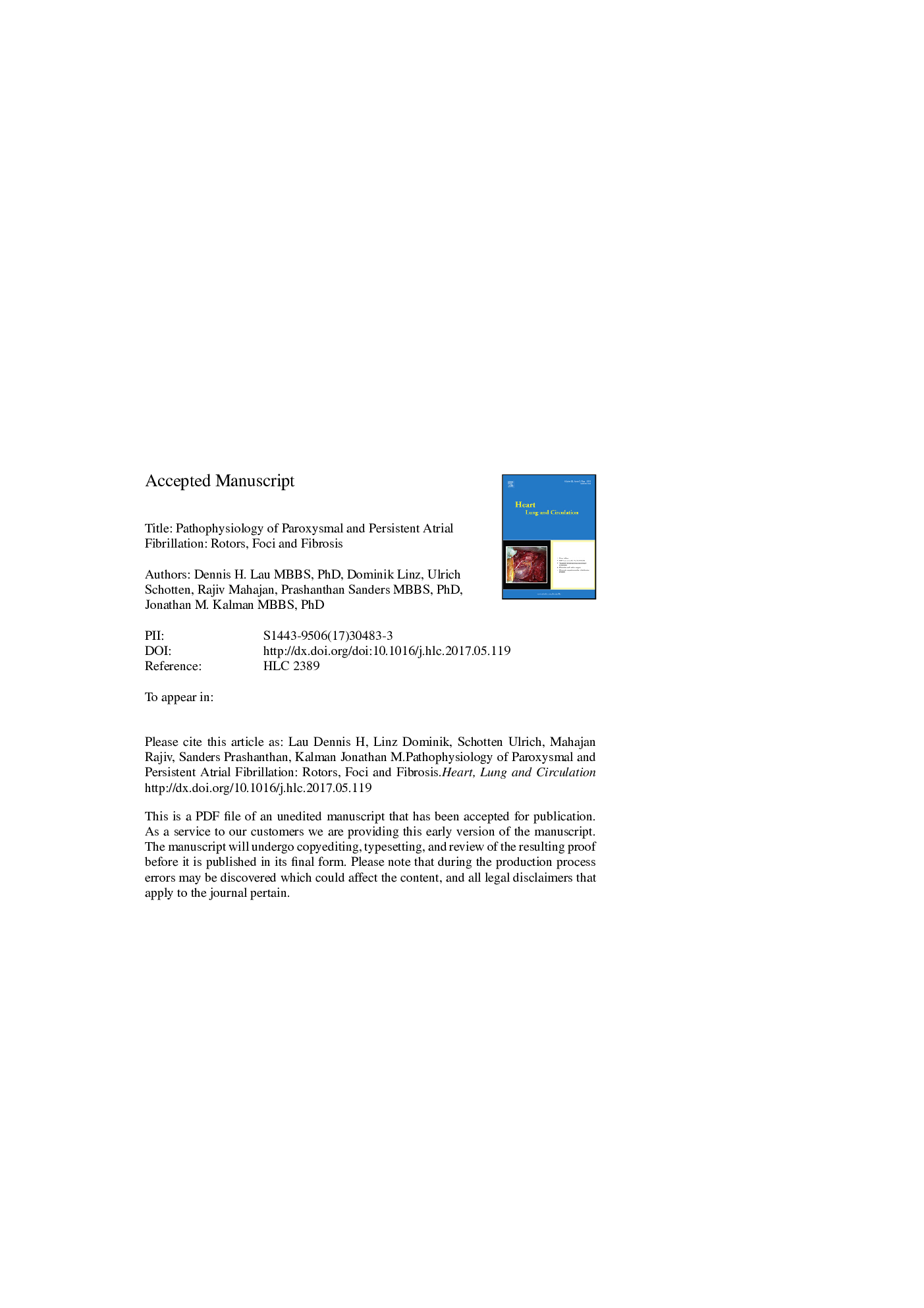| Article ID | Journal | Published Year | Pages | File Type |
|---|---|---|---|---|
| 5602480 | Heart, Lung and Circulation | 2017 | 23 Pages |
Abstract
Recent advances in our understanding of the mechanisms underlying atrial fibrillation (AF) have further underscored the complex pathophysiological basis of the arrhythmia. It has become apparent that the current clinical classification of AF does not reflect the severity of the underlying atrial disease. Atrial fibrosis has been identified as the key structural change in different substrates that are responsible for the perpetuation of AF. Three-dimensional electroanatomical mapping and late gadolinium-enhanced magnetic resonance imaging are novel modalities that can be used to facilitate identification and quantitation of atrial fibrosis for improved delineation of the AF substrate. Advances in AF mapping technology using endocardial 'panaromic' basket-type catheter and non-invasive body surface electrodes have facilitated the identification of two major arrhythmic mechanisms of interest, namely rotational ('rotors') and ectopic focal activations ('foci'). Ongoing research on these potential drivers of AF may provide guidance to more mechanistic based therapies to improve outcomes for this complex arrhythmia in the future. Here, we aim to review the differences in AF substrate in those with paroxysmal and more persistent forms of the arrhythmia by evaluating fibrosis, rotors and foci, towards improved AF substrate classification and individualised substrate based therapies.
Related Topics
Health Sciences
Medicine and Dentistry
Cardiology and Cardiovascular Medicine
Authors
Dennis H. MBBS, PhD, Dominik MD, PhD, Ulrich MD, PhD, Rajiv MD, PhD, Prashanthan MBBS, PhD, Jonathan M. MBBS, PhD,
